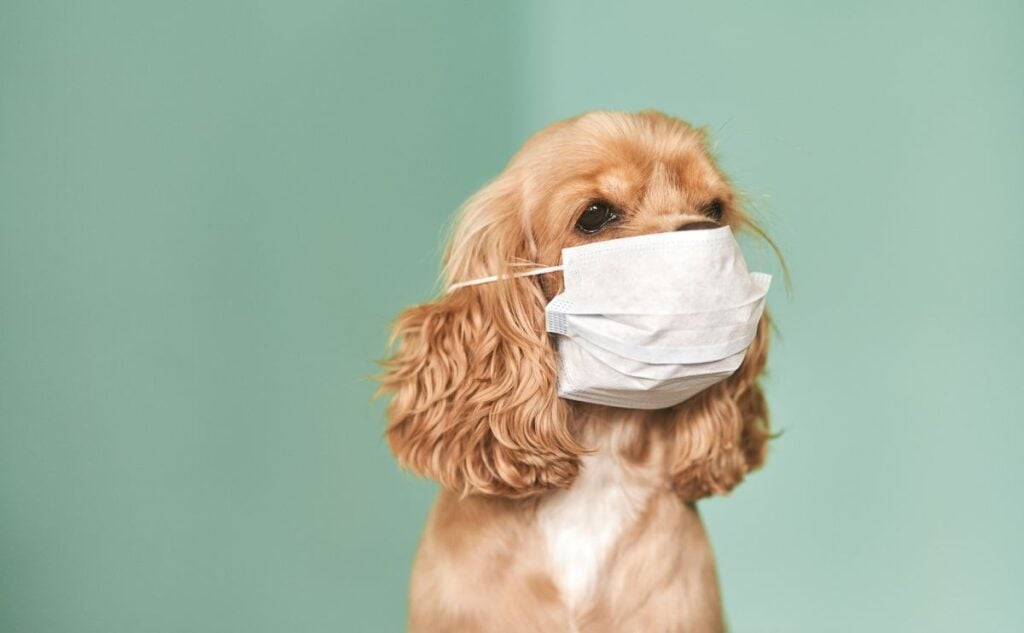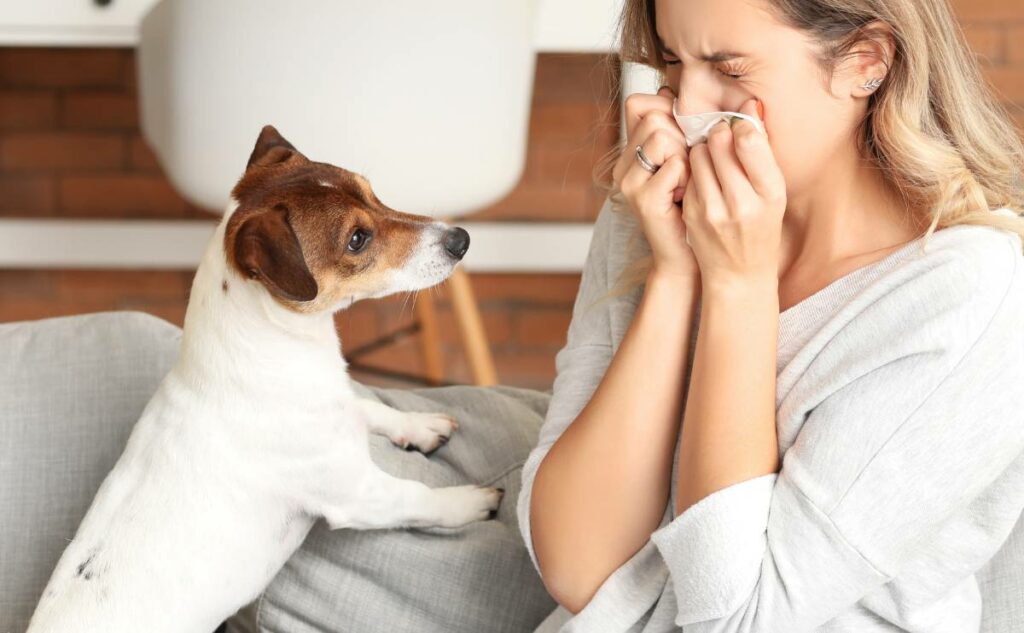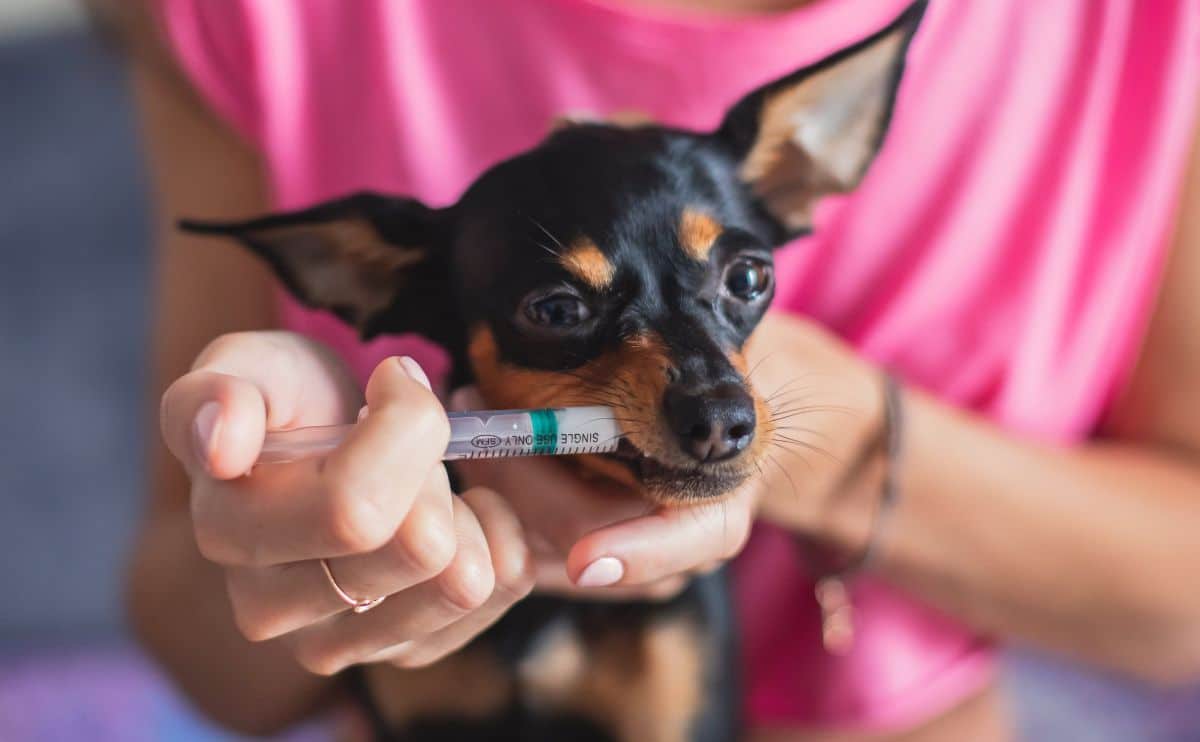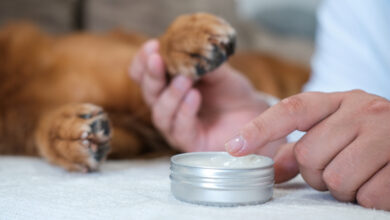Parainfluenza In Dogs: Symptoms, Treatment, Prevention & More
When you purchase through links on our site, we may earn a commission. Here’s how it works.
Have you got questions about parainfluenza in dogs? In this article, we’ll explain all about this canine infection, from what causes it and the symptoms to the treatment methods and how to prevent it. Let’s find out!
Table of Contents
What Is Parainfluenza In Dogs?
Parainfluenza in dogs is caused by the Canine parainfluenza virus (CPIV), which is one of the primary pathogens that cause kennel cough. Kennel cough is known in scientific terms as canine infectious tracheitis, and other contributing pathogens include Bordetella bronchiseptica, Canine adenovirus type 2 (CAV-2), and Mycoplasma cynos.
Despite the different causes, your veterinarian may not take a swab sample to find out the underlying virus or bacteria. This is because the treatment is the same regardless of which pathogen is causing the symptoms. However, while working at a dog rescue charity kennels, we used to take swabs regularly to find out which viruses were circulating and help formulate a management plan.

Parainfluenza Symptoms In Dogs
If your dog is infected with the parainfluenza virus, you might notice some of the following symptoms:
- Coughing (typically a dry, hacking cough)
- Phlegm or froth produced when coughing
- Retching, gagging, or vomiting during or after coughing episodes
- Reduced appetite
- Lethargy
- Fever
- Sneezing
- Nasal discharge
Your dog’s veterinarian will be able to do a few tests when examining your dog to check whether kennel cough is the cause of their symptoms. This would include a tracheal pinch test, where a quick pinch of the windpipe triggers a cough, and the use of a stethoscope to check that the infection is affecting the upper airways, rather than the lungs.
How Does Parainfluenza In Dogs Spread?
If your dog is infected with the parainfluenza virus, they’ll spread virus particles into their environment each time they cough or sneeze, and their nasal discharge, phlegm, and saliva will contain the virus too. Sadly, parainfluenza in dogs is very contagious and spreads like wildfire if dogs are in close contact with each other.
What’s more, you might think you’re safe to take your dog out and about with other dogs once they stop coughing or showing symptoms, but if their immune system is still clearing the infection, they could still be contagious. Dogs with kennel cough caused by parainfluenza may cough for a couple of weeks, and they could remain contagious for up to a week longer than that.

Is Parainfluenza In Dogs Serious?
Parainfluenza infection in dogs varies in severity. Many healthy adult dogs will spend a few days coughing a lot but continue to eat, drink, and play throughout their illness. Others may feel a bit miserable and go off their food. The biggest risk, though, is young puppies, older dogs, or those with other serious health concerns who may not have a strong immune system. In these cases, the infection is more likely to take hold and may spread to the lungs and lower airways, causing breathlessness and risk of pneumonia.
Canine Parainfluenza Treatment
Even though parainfluenza is a virus, if your dog is infected the veterinarian will likely prescribe antibiotics. This isn’t a mistake, but to keep any secondary bacterial infection at bay. Alongside antibiotics, your dog may need anti-inflammatory medication to keep their temperature down and help ease the irritation and soreness in their throat.
If your dog is feeling too poorly to eat and drink, they might need to go on a fluid drip in the hospital, and if they are struggling to breathe, the vet might need to take an X-ray of their chest or provide them with oxygen.

Can Parainfluenza In Dogs Be Prevented?
Parainfluenza in dogs can be prevented with vaccination, and the parainfluenza vaccine for dogs is included with other vaccinations. Depending on the type of combination vaccine used by your dog’s veterinary clinic, parainfluenza might be covered in their annual booster or kennel cough vaccine.
The vaccination is usually given as a combination vaccine, covering against parainfluenza, parvovirus, and canine distemper virus. The vaccine should be given to puppies as a primary course of at least two injections, repeated after one year, and then given at least every three years. Learn more about the DHPP vaccine, which is also referred to as DAPP, DA2PP, or DAPPC.
Don’t forget, though, that with so many different pathogens causing the symptoms of kennel cough, vaccination won’t prevent your dog from developing an infection caused by the other pathogens. However, it will reduce symptom severity and spread.
Frequently Asked Questions
Here are some common questions pup owners have about parainfluenza in dogs. Don’t see yours here? Ask us in our comments, and we’ll do our best to answer you.
Can Humans Catch Parainfluenza From Dogs?
Thankfully, canine parainfluenza virus is species-specific, which means that it only affects dogs, and it’s very unlikely that a human would catch it from their infected dog. However, it’s always a good idea to use good hygiene around your dog and other pets.
Is Parainfluenza The Same As Canine Influenza?
Is there a difference between parainfluenza vs canine influenza? While the name of these two doggy viruses is similar, they’re not the same. Despite this, they do cause similar symptoms – including a cough, nasal discharge, sneezing, and a fever, but your dog’s parainfluenza vaccine won’t protect them against canine influenza, and vice versa.
Should I Consider Pet Insurance?
Although parainfluenza is preventable with the vaccine, many unanticipated illnesses and accidents are not and can end up costing you hundreds and often thousands of dollars for veterinary diagnosis and treatment. However, getting a pet insurance policy for your furry friend can be a game-changer by covering a large portion of your unplanned vet bills. Signing your pup up as early as possible before any health problems arise is key. Check out our guide to learn more and determine if pet insurance is worth it for your situation, along with our reviews of the best pet insurance providers.




